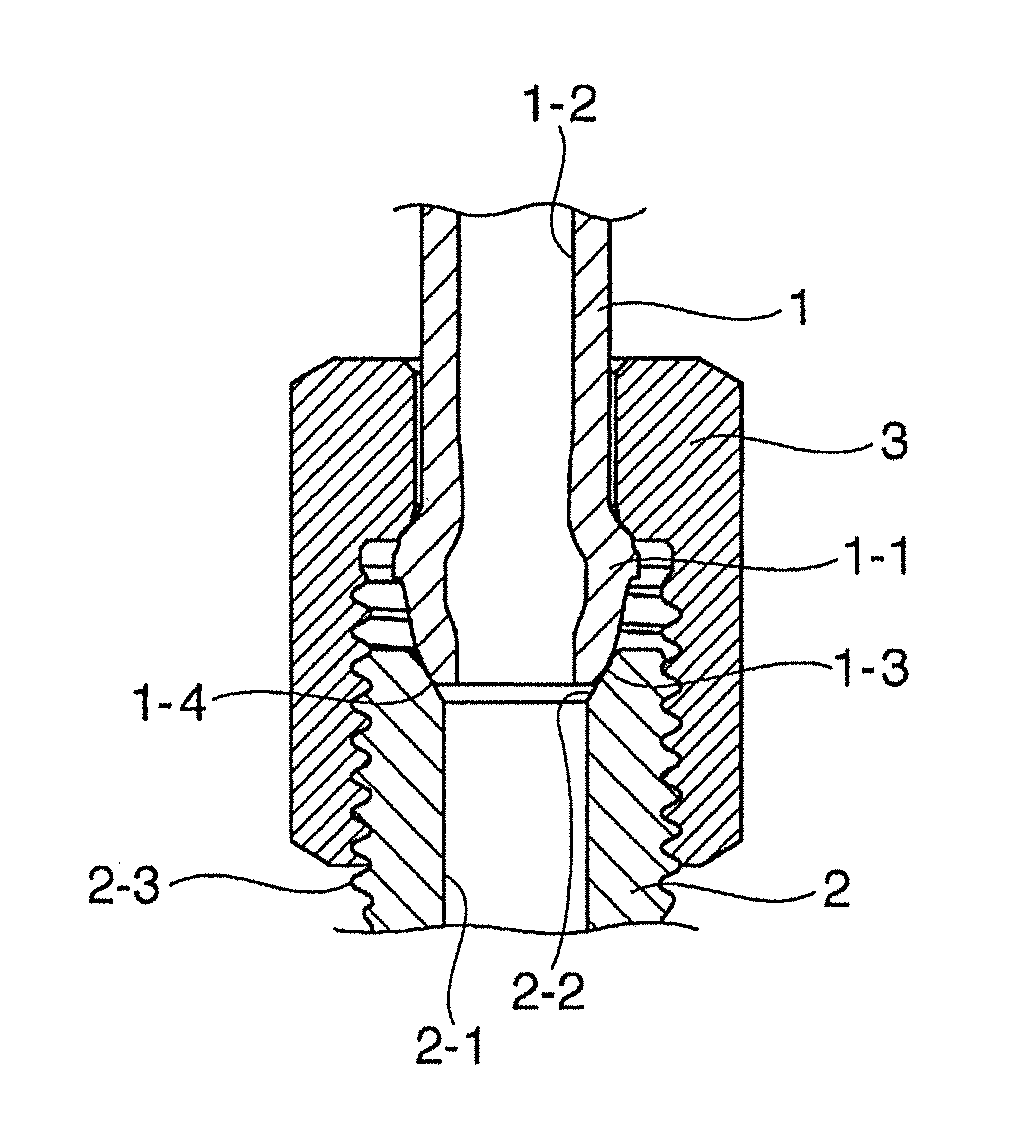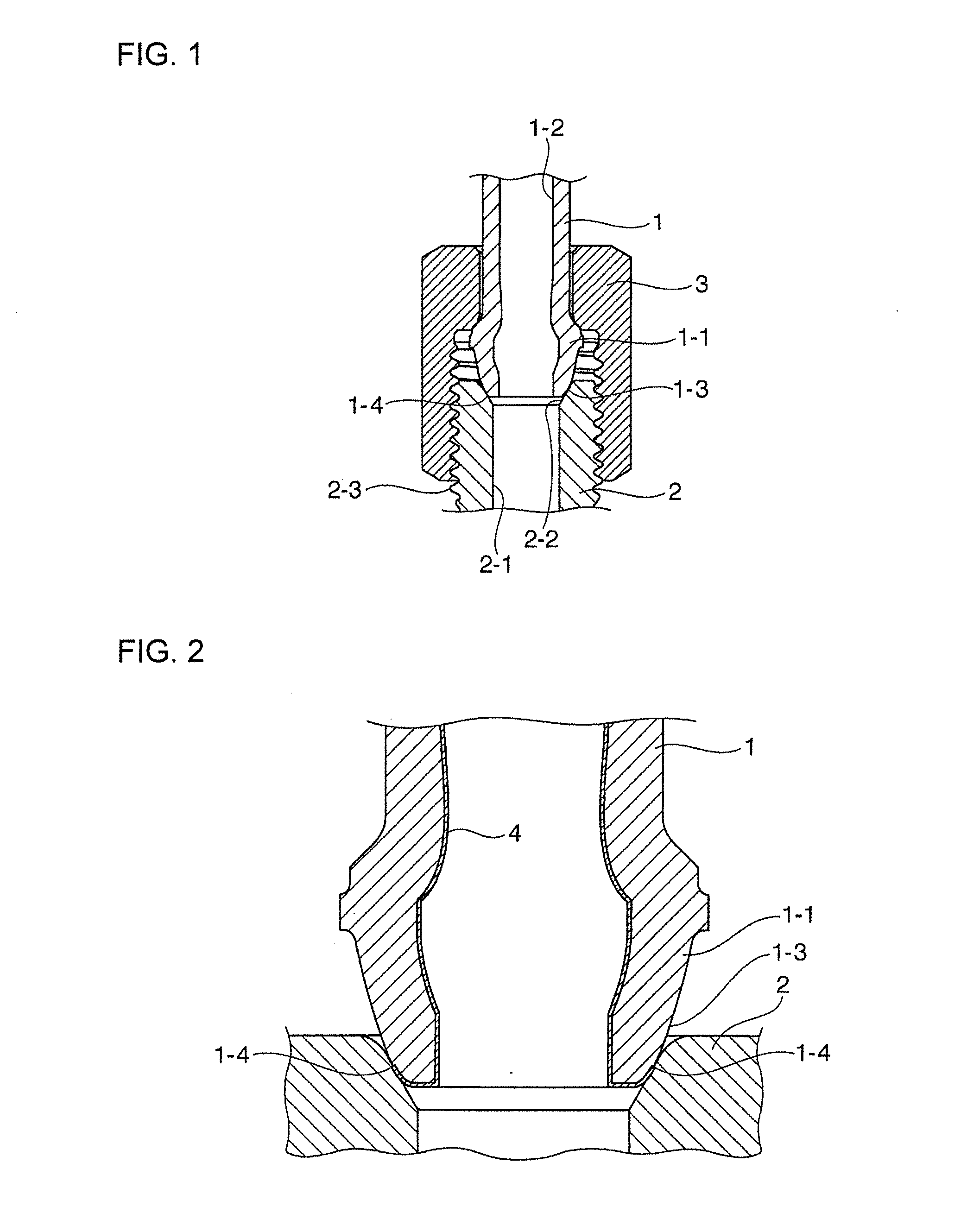Steel fuel conveying pipe
a conveying pipe and steel technology, applied in the field of pipes, can solve the problems of increasing the risk of scc, increasing the cost, and increasing the risk of eluted ions, and achieve the effect of improving the reliability of the gasoline direct-injection engine system or the diesel engine system, and excellent anticorrosion performan
- Summary
- Abstract
- Description
- Claims
- Application Information
AI Technical Summary
Benefits of technology
Problems solved by technology
Method used
Image
Examples
example
[0020]The present invention will be explained below more specifically based upon examples. However, the present invention is not limited by the examples described below, and all of modifications and implementations of the invention in the scope which does not deviate from the gist of the present invention are involved in the technical scope of the present invention.
[0021]In the examples, an effect of the Ni-plated layer (an anti-rust film layer) which was applied to an inner face of the pipe was determined by performing corrosion test to corrosive fuel and observing a corrosion situation (corrosion resistance) visually and using a microscope.
examples 1 to 9
[0022]Steel pipe materials having an outer diameter of 8 mm and an inner diameter of 5 mm (Test material Nos. 1 to 9) were used as pipe base materials, and a Ni-plated layer (a layer thickness was 10 μm or more and 25 μm or less) composed of a diffusion layer having a layer thickness of 0.6 to 19.6 μm and a non-diffusion layer having a layer thickness of 3.1 to 20.6 μm was formed on an inner surface of each pipe by conventional electroplating and thermal treatment.
[0023]A result obtained by performing measurement of layer thicknesses of the Ni-plated layers composed of the diffusion layer and the non-diffusion layer and formed on steel pipe materials in the examples, corrosiveness test and followability test (bending working test) thereof in the following procedure is shown in Table 1.
Measurement of Layer Thickness of Ni-Plated Layer:
[0024]The layer thickness of the Ni-plated layer composed of the diffusion layer and the non-diffusion layer was measured by linear analysis using a sc...
example 1
Conventional Example 1
[0029]A result obtained by using a steel pipe material having an outer diameter of 8 mm and an inner diameter of 5 mm similarly to those of examples 1 to 9, forming only a non-diffusion layer having layer thickness of 7.0 μm on an inner surface of the pipe by conventional electroplating (without a non-diffusion layer), and performing a corrosiveness test and followability test (bending working test) in the same method as those of the above-described examples is also shown in Table 1. Measurement of the layer thickness of the Ni-plated layer was performed by the same method as those of the above-described examples 1 to 9.
PUM
 Login to View More
Login to View More Abstract
Description
Claims
Application Information
 Login to View More
Login to View More - R&D
- Intellectual Property
- Life Sciences
- Materials
- Tech Scout
- Unparalleled Data Quality
- Higher Quality Content
- 60% Fewer Hallucinations
Browse by: Latest US Patents, China's latest patents, Technical Efficacy Thesaurus, Application Domain, Technology Topic, Popular Technical Reports.
© 2025 PatSnap. All rights reserved.Legal|Privacy policy|Modern Slavery Act Transparency Statement|Sitemap|About US| Contact US: help@patsnap.com



